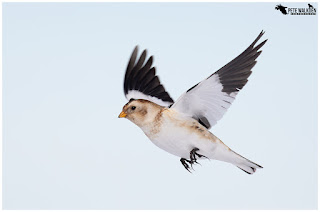With the house move, self-isolation and then lockdowns, last winter was anything but normal. I had hoped to take time out for myself over this January and some of February for my own photography here on Mull, but aside from a couple of days early in the new year, the weather was dire. When we moved here, the winter weather would alternate between a fortnight of wet and windy conditions, to being calm and sunny for the next couple of weeks. Not this past winter, when it seemed to be raining almost all the time.
So when the sun did put in an appearance, I was out and about, checking in on the otter families and individuals I've come to know, and always on the look-out for something to point my camera at, especially the white-tailed eagles, that often look for food around the shores of the lochs early morning.
I'm hoping next winter sees a few more workshops during January and early February, as the island is quiet in terms of visitors, and while the days are short and the weather can be challenging, the amount of encounters I enjoyed with otters was incredible. And I had them to myself.
I also took a few walks around areas of Mull that I'd not really explored before, such as Loch Ba. This is a large freshwater loch behind the Knock Estate, and while it didn't yield an enormous amount of wildlife for photos, I did see a few goldeneye on the dark waters, plus a white-tailed eagle, as I was strolling along.
Other birds seen during the winter included whooper swans, this time on the Mish lochs, and on a lovely calm day, when the waters looked black. The sound of them calling echoed through the glens - it was magical.
A bird I'd never seen on Mull before also put in a brief appearance; a kingfisher. He was fishing on the tidal river near Lochdon from the large boulders that litter the shore.
Birds of prey were one of the original reasons why I visited Mull, and I love having them around locally. I managed a couple of half-decent encounters with hen harriers during the winter, and a walk on the tops of the hills also resulted in watching a pair of golden eagles flying past me, pretty much at eye-level. Wonderful.
Traditionally February sees me heading north to the Highlands for workshops, but this year I was very much limited in duration by workshops here on Mull, either side of the trip. Most of my time in the Highlands would be spent running workshops, leaving only a couple of days to spend time with Andy and Lyndsey.
My main concern for the sessions was an apparent lack of mountain hares. A location we have used for years has suffered a population crash, from a combination of rewilding, poor weather for breeding and a lack of visitors to the area from the lockdowns. Prior to the workshops beginning, Lyndsey and I went for a wander around the site, and it was clear that with the absence of people, the local golden eagles had been enjoying a larger area to hunt in, and we watched a young eagle spend the best part of an hour flying back and forth along the ridges of the hills, in search of the hares.
The other worry was the weather. Andy had been tearing his hair out with the mild conditions during his workshops throughout the winter, which led to some of the stars not performing as expected. Andy is of course experienced enough to ensure clients have a great experience even when things aren't going to plan. Crested tits though, as an example, will feed on insects if they're flying around, which is what happens is it's warm enough and the ground hasn't frozen.
I needn't have worried, as I timed my visit with a cold snap, and for the most part, the workshops were run in almost perfect winter weather, with snow and ice, and decent light too. And that meant the crested tits weren't able to find insects, so visited the feeders, making my job a lot easier.
The workshops at the crested tit site were magical. At times the birds were almost landing on us, they were so close. And as I'd invested in the RF 100-500mm lens for my camera, they were a great subject to test it on.
We also went looking for red deer, red grouse, red squirrels (at Andy's site), snow buntings and even called into some of the harbours for the waders and wildfowl around at that time of year.
And, having spoken with Andy and Lyndsey about possible alternative sites for the mountain hares, I was chuffed to find one for myself (and my client who was overjoyed with the encounter) on one of the days, based on the ideas they'd suggested.
The trip ended with a weekend spent with Andy and Lyndsey, enjoying some wildlife local to them. We visited the red kite feeding station at Tollie, which was fun, and where we bumped into Karen Miller, a friend I've not seen for ages (I could say that about many friends, what with the lockdowns and our move to Mull).
Plus we called over to some coastal locations in search of waders again. We didn't enjoy the same fortune I'd had with purple sandpipers on a workshop, but we did see dunlins, sanderlings and some wintering ducks.
I'm considering running some additional Highlands-based workshops perhaps in December and January if I get enough interest from people. Please drop me an email or complete the contact form on my website if this would interest you.
Then it was back home, which didn't mean a day's driving down to the Midlands, but a trundle through breathtaking scenery leading to Mull again. Not a bad place to return to!




























No comments:
Post a Comment